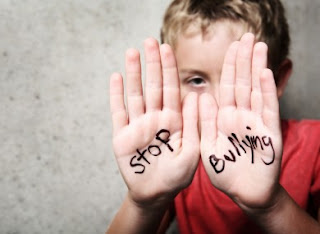 I hated walking alone.
I hated walking alone.
The memories still sting when I recall middle and high school. I’m twenty-three years old and I can remember every detail.
Three girls, none of whom I knew, decided I was going to be the object of their “affection.”
Like clockwork, on my way to the annex of our building, I walked what seemed a mile with three girls following along; one would hold her middle finger in my face while the other two would comment on my attire, face, or just spit out some rude remark.
I remember wishing, praying someone would walk by and stop them.
No one ever did.
I hated going to Speech and Debate class.
My stomach would turn every time the bell rang.
I remember thinking if only I wasn’t by myself this wouldn’t happen.
One day, I convinced my best friend to walk with me to class. I didn’t tell her why. I was hoping they wouldn’t bother me if I wasn’t alone. I tried to convince myself, “They will surely just walk by.”
I was wrong.
They completely ignored the fact that she was there.
“Look who is here, the sl*t. What a c@n*. Look at her, she looks like a %h#re today. Go back to Alaska!”
Apparently, I was a sl*t and wearing fuzzy winter boots meant I was from Alaska.
And somehow over the course of 24 hours, I had gone from a prude b*tc# to a sl*t.
My best friend asked, “What was that all about?”
“I have no idea, I don’t even know any of them.”
I remember her insisting, “Seriously, if this is happening every day you need to tell someone.”
“But what in the world would that do?” I thought, “It would only make it worse.”
What is Bullying vs. What is NOT Bullying
There are no innocent bystanders. Everyone is impacted by bullying. The majority of us have experienced some part of bullying at one point or another; some more severe than others.
It is our duty as peers and adults to set not only a good example for our youth but to educate ourselves and our children about what bullying is and what it is not. It is also our obligation to recognize that “bullying is peer abuse that should not be tolerated under any circumstances” (Dr. Olweus – Olweus Bullying Prevention Program).
Several different agencies have defined bullying: the Center for Disease Control and Prevention, Olweus Bullying Prevention, and the US Department of Education.
All of these organizations have well-defined explanations of bullying. To properly define bullying it needs to meet three conditions:
- The action is unwanted and aggressive: The intention is hurtful in nature and the behavior is unwanted by the victim.
- The action can or is repeated over time: The action occurs more than once or the person or group of individuals target the victim repeatedly.
- An imbalance of power or strength exists: The victim feels powerless to do anything.
What does NOT constitute Bullying?
- Simply disliking someone is not an act of bullying: It is human nature to not like every person you encounter. While it may not feel good to know someone doesn’t like you, verbal and non-verbal messages of “I don’t like you” are not acts of bullying. It is important to remember that while you may not like everyone, everyone deserves to be respected (Safe From Bullies).
- Exclusion: Exclusion can be a very unpleasant but, just like you won’t like everyone you encounter, it is normal for people to gather with their friends or play a game at the playground with just their friends. However, acts such as shunning, alienating, and leaving someone out on purpose can be considered acts of bullying (Pacer).
- Making a joke about someone: Occasionally being teased is not uncommon and when everyone involved is not offended it is not considered bullying. However, when the intention of the act is to be hurtful or harmful it becomes bullying (Pacer).
- Arguments: People disagree about a variety of different things. However, when a power imbalance exists or the intent is to be mean or control someone else that is bullying. (Pacer) So, in situations when a power imbalance does not exist or both kids do not perceive a power imbalance this is not considered bullying (StopBullying).
- Isolated acts of harassment, aggressive behavior, intimidation, or meanness: Even though bullying and harassment go hand in hand, not all harassment is bullying or vice versa. The federal civil rights law states, harassment is unwelcome conduct based on a protected class that is severe, pervasive, or persistent and creates a hostile environment (StopBullying). So, unless the behavior is severe in its harm, a single incident does not typically constitute bullying.
What can you do?
The STARS staff wants you to be aware of what constituents bullying; encourage you be advocates for prevention; and intervene when it does happen. Be an advocate for change and join us in our Bee A Friend Campaign! Learn more here.
STARS also offers education tools to help you, your organization, school, peers, and young children know how they can be advocates for bullying prevention! Check out our different programs that are geared toward a variety of age groups to help prevent and educate about bullying prevention and intervention.
Kids On The Block: K -8th
Services for Students Who Are Deaf and Hard of Hearing
Move2Stand: 9th-12th



